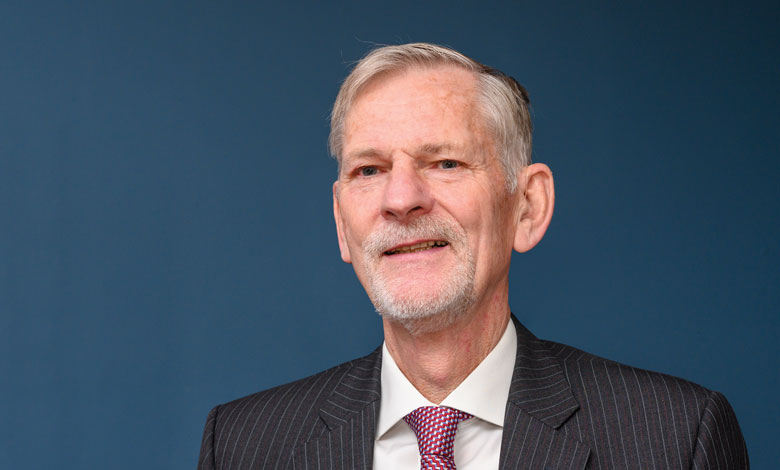
Working in collaboration to unlock the potential of the network
27th May 2025
Northern Ireland’s energy: The full story
27th May 2025Filling the energy supply gap

Transitioning to renewable energy from fossil fuels to meet net zero targets by 2050 is creating supply challenges, necessitating a mix of short-, medium-, and long-term energy storage methods, Tony Roulstone, University of Cambridge lecturer, tells agendaNi.
Roulstone outlines research by Independent Commodity Intelligent Services from November 2024 which found that 50 per cent of electricity in Europe was generated using renewable methods between January and August 2024. However, he notes that many countries had hundreds of hours of negative power price due to the system being overloaded with high wind and solar generation.
“There is an economic problem here which needs to be solved. It is only going to get worse as renewable shares increase,” observes Roulstone. “If you have negative power prices, it tells you that you have got more supply than demand.” There will also be periods when supply does not meet demand.
For the future UK power system, electricity generated from renewable methods like solar and wind will range between 30GW and 200GW due to variations in weather, while demand vary much less, between 60GW and 80GW. “This is called the supply gap,” asserts Roulstone.
“If you had enough renewable supply to generate 600TWh in the year (UK forecast for 2050), you would be missing about 20 per cent of demand, so you need to fill it up. At other times, you will have 20 per cent of excess supply and therefore curtailment.”
Therefore, countries will need flexibility in the system to ensure demand is met and to use the excess. He traces the difficulty of meeting the power requirement to solve this problem: “It is rather peaky. Very high power is needed for very short periods of time. You need something which provides lots of power, but not very often.”
Suitable methods
A key question is the length of time excess electricity needs to be stored for later supply. Roulstone explains. There is no single answer to this question as he outlines: “Our analysis found that 10 per cent needs to be stored for a day, 50 per cent – the biggest amount – needs to be stored for about a week. The balance needs to be stored for much longer periods of time – months and years.”
“If you do not have energy storage, supply will be very volatile. You will not meet the grid requirement to meet demand and market prices will be all over the place.”
Storage methods include electro-chemical such as batteries, Li-Ion, and flow; physical systems such as compressed air, liquid air, and thermal energy; and chemical systems such as hydrogen, ammonia, and hydrocarbons. Roulstone says electro-chemical systems are the most efficient, followed by physical systems, and then chemical systems.
However, batteries are also the most expensive form of storage, costing about $100 per kWh of capacity. He notes: “If you want to store the amount that Ireland will need, the cost would be about twice the GDP of Ireland. It is not going to be done. You need something that is probably 100 times cheaper than that.” The answer comes in the form of chemical systems which will have future storage costs of $1 per kWh, Roulstone says.
He indicates the importance of using a mix of storage methods, adding that “there are lots of options” to match the flexibility need created by renewable energy.
Batteries are most suitable for short-term storage, a mix of methods are suitable for medium-term storage including physical system such as pumped hydro and compressed air. Roulstone explains that chemical systems such as hydrogen are best for long-term storage. He also traces the important role of interconnectors for countries to share power, and that of natural gas and biomass which can be used for carbon capture and storage.
“Any type of storage is better than none, all types of storage are better than batteries alone and a chemical system has the smallest impact on electricity costs. There is little benefit from more than a couple of technologies,” Roulstone says.
He asserts that Ireland’s location means it is “inhospitable for solar power”, but it is “nicely positioned near the Atlantic” to take advantage of its fronts in the production of wind energy. However, because of its proximity to Europe, high pressure wind patterns originating on the continent can produce long periods of low wind, depriving Ireland of the wind it depends on.
Roulstone illustrates the importance of energy storage in Ireland and its geographical positioning: “Ireland is an isolated area surrounded by sea, loosely connected to the UK and it has to manage its energy by itself.” For Ireland, storage capacity of a few GWh are needed for short-term supply, 10 per cent of GWh is needed for the medium term, and between 5 and 10 per cent of annual demand is needed for long-term demand
Stressing the importance of energy storage in the transition from fossil fuels, Roulstone says: “If you do not have energy storage, supply will be very volatile. You will not meet the grid requirement to meet demand and market prices will be all over the place.”
